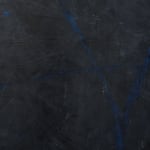Rindon Johnson
Lyn Says #1: As for we who "love to be astonished," money makes money, luck makes luck. Moves forward, drives on. Class background not landscape--still here and there in 1969 I could feel the scope of collectivity. It was the present time for a little while, and not so new as we thought then, the present always after war. Ever since it has been hard for me to share my time. yellow of that sad room was again the yellow of naps, where she waited, restless, faithless, for more days. They say that the alternative for the bourgeoisie was gullibility. Call it water and dogs. Reason looks for two, then arranges it from there. But can one imagine a madman in love. Goodbye; enough that was good. There was a pause, a rose, something on paper. I may balk but I won't recede. Because desire is always embarrassing. At the beach, with a fresh flush. The child looks out. The berries are kept in the brambles, on wires on reserve for the birds. At a distance, the sun is small., 2023
Leather, oil, acrylic and wax
167.5 x 167.5 x 2 cm
66 x 66 x 3/4 inches
66 x 66 x 3/4 inches
Copyright The Artist
Photo: Marjorie Brunet Plaza
Weitere Abbildungen
„Lyn Says #1 [...]“ (2023) ist ein Wandobjekt aus Leder, das der Künstler mit Polyurethan, Bleichmittel, Mineralen und Farbstiften bearbeitet und über Monate der Witterung aussetzt, die ebenfalls Spuren in...
„Lyn Says #1 [...]“ (2023) ist ein Wandobjekt aus Leder, das der Künstler mit Polyurethan, Bleichmittel, Mineralen und Farbstiften bearbeitet und über Monate der Witterung aussetzt, die ebenfalls Spuren in die Häute zeichnet. Für Rindon Johnson steht das Leder hier als Nebenprodukt und Relikt industrieller Verarbeitungsketten und zeigt einen umfassenden historischen und konzeptionellen Zustand auf, der den Umgang mit anderen Lebewesen verdeutlicht und sich auf das kolonialistische Erbe westlicher Staaten übertragen lässt. Wer und was kann zu den Nebenprodukten gezählt werden? Diese Frage verfolgt Johnson in der Werkserie, in dem er die Unterwerfung, Vernachlässigung und Austauschbarkeit von nicht-menschlichen Akteuren in unserer heutigen Zeit thematisiert und gleichzeitig Parallelen zu identitätspolitischen und klassistischen Themen, sowie Praktiken rassistischer Ausbeutung aufzeichnet. In den Arbeiten des Künstlers werfen die Titel auf poetische Weise zusätzliche Fragen hinsichtlich Autonomie und Macht auf. Johnsons Überlegungen gehen stets von den Möglichkeiten und der Qualität von Sprache aus, und finden ihren Einfluss in Form der Titel, welche die Werke wie Gedichte begleiten. Sie sind essenzieller Bestandteil des Werks, sie sind durch subjektive Eindrücke des Künstlers gezeichnet und entziehen sich bewussten Ambivalenzen einer eindeutigen Lesbarkeit.
„Lyn Says #1 [...]“ (2023) is a wall object made of leather. The artist manufactures visible traces on the hide by treating it with polyurethane, bleach, minerals, colored pencils, and exposure to weathering for months at a time. For Rindon Johnson, leather is a by-product and a relic of industrial processing chains, revealing a comprehensive historical and conceptual condition that illustrates the treatment of other living beings and can be applied to the colonialist legacy of Western states. Who and what can be counted as by-products? Johnson pursues this question in the work series, in which he addresses the subjugation, neglect and exchangeability of non-human actors in our contemporary times, while drawing parallels to identity politics and classist themes, as well as practices of racist exploitation. The poetic titles raise additional questions regarding autonomy and power. Johnson's reflections always start from the possibilities and quality of language and find their influence in the form of titles that accompany the works like poems. They are an essential part of the work, eluding clear readability through the artist's subjective impressions and deliberate ambivalences.
„Lyn Says #1 [...]“ (2023) is a wall object made of leather. The artist manufactures visible traces on the hide by treating it with polyurethane, bleach, minerals, colored pencils, and exposure to weathering for months at a time. For Rindon Johnson, leather is a by-product and a relic of industrial processing chains, revealing a comprehensive historical and conceptual condition that illustrates the treatment of other living beings and can be applied to the colonialist legacy of Western states. Who and what can be counted as by-products? Johnson pursues this question in the work series, in which he addresses the subjugation, neglect and exchangeability of non-human actors in our contemporary times, while drawing parallels to identity politics and classist themes, as well as practices of racist exploitation. The poetic titles raise additional questions regarding autonomy and power. Johnson's reflections always start from the possibilities and quality of language and find their influence in the form of titles that accompany the works like poems. They are an essential part of the work, eluding clear readability through the artist's subjective impressions and deliberate ambivalences.







